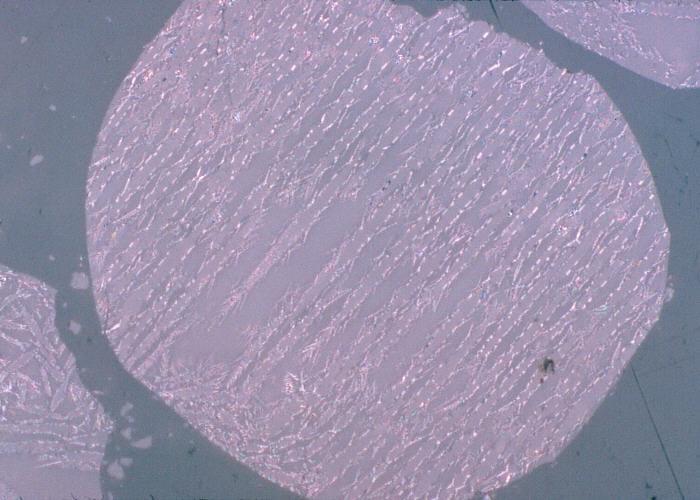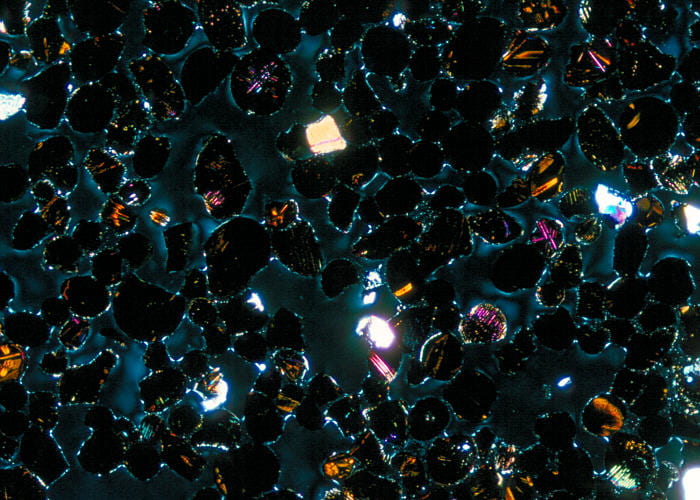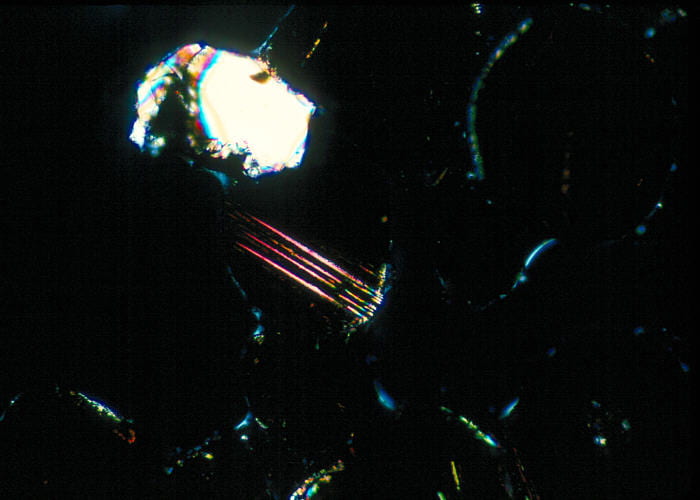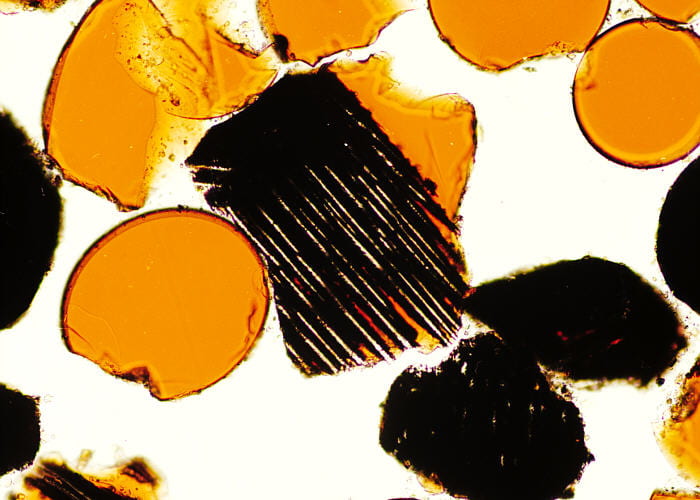Lunar thin section 74220
This is is sample of orange soil from the Taurus-Littrow Valley area, in a range of mountains between Mare Serenetatis and Mare Tranquillitatis. It was collected by the Apollo 17 mission. This material represents quenched fire fountain droplets of erupting high-Ti mare basalt, and has been dated at 3.48 Ga. The outer surfaces of the spheres are commonly coated with ZnS and other volatile materials.
|
|
This sample is made mostly of orange glass spheres, fractured spheres, partially crystallized glass spheres, and a small admixture of mare basalt fragments. Erupted basaltic liquids formed droplets at the vent, and followed ballistic trajectories to the ground. Those that quenched to glass without nucleating crystals are clear orange, with the color caused by their high titanium content. In over half of these spheres (the wholly or partially black ones) olivine crystals nucleated on the sphere margin and grew inward as blade-shaped crystals. The black color is caused by the crystallization of many tiny ilmenite crystals on the olivine margins (see reflected light photo below). In cross polarized light the glass spheres are black, but you can see birefringent olivine in those which nucleated crystals. Birefringent blocky grains are bits of fragmented mare basalt. Field width is 4 mm.
Views in plane and cross-polarized light.
|
|
|
Closeup of some spheres, showing one (center) with four long olivine blades that originally grew from lower right to upper left. The black margins can be differentiated from the colorless olivine. The four olivine blades have high birefringence, as do a few others, and stand out in contrast to the isotropic glass and opaque masses of ilmenite crystals decorating olivine margins. Field width is 0.8 mm.
Views in plane and cross-polarized light.
|
|
|
A fractured glass bead with olivine blades going in two directions. Fracturing probably took place long after eruption, by meteorite impact shock. Again, the black color of the grains in which olivine nucleated is caused by small ilmenite crystals that nucleated in the Ti- and Fe-rich liquid adjacent to the rapidly crystallizing olivine blades. The olivine blades can be clearly seen in the central grain (2 directions). Field width is 0.8 mm.
Views in plane and cross-polarized light.
|
 |
This is a reflected light image of one orange sphere in which numerous olivine blades nucleated and grew. The darkest gray material around the margins is epoxy. In the sphere, the darker gray material is glass, the lighter gray blades are olivine, and the tiny bright-white plates and specks are ilmenite. The parallel growth of olivine blades in most samples is remarkable. Field width is 0.32 mm.
|







